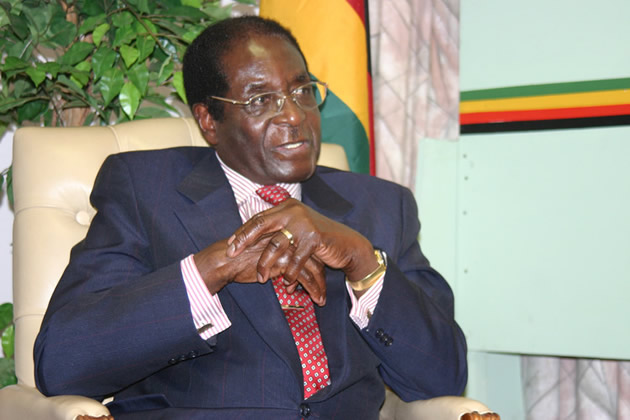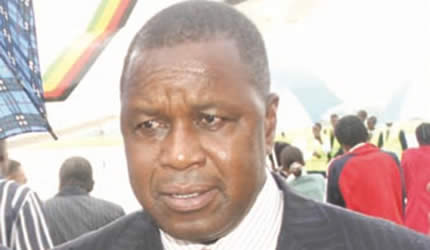President leaves for Vatican City

Mabasa Sasa Deputy Editor
President Mugabe yesterday left for Vatican City for tomorrow’s canonisation of Angelo Giuseppe Roncalli (Pope John XXIII) and Karol Jozef Wojtyla (Pope John Paul II) by Pope Francis.
A devout Roman Catholic, President Mugabe will join a reported 40-plus other leaders at the ceremony in St Peter’s Square.
This will be the first time in the church’s history that two popes will be canonised on the same day.
Hundreds of thousands of people have been flocking to Rome since the Easter Holiday.
A Vatican spokesman has estimated that St Peter’s Square and the avenue leading into it can hold about 250 000 people. The Easter Sunday congregation this year was put at 150 000.
Local media say there will not be much glitz and glamour for the April 27 ceremony, in line with Pope Francis’ reputed “no-frills” approach.
Vicar of Rome, Cardinal Agostino Vallini told the media that some churches would remain open overnight on the eve of the canonisation “to provide a spiritual retreat for pilgrims”.
Rome Mayor Ignazio Marino added that they would “distribute almost four million plastic bottles of water to the crowds”, and would deploy 2 000 police officers and 2 500 civil protection department volunteers.
Medical teams will staff 13 first aid stations and 1 000 chemical toilets have been set up near Vatican City and key tourist areas.
Subway lines and buses will run nonstop, and 17 big public viewing screens have been set up throughout the city.
Despite the US$11 million cost of the ceremony, all attention is on the two men who will be canonised by the world’s largest Christian congregation. Pope John Paul II’s canonisation is the quickest ascension to Catholic sainthood, and one of the fastest in the Church’s history.
He died in 2005.
When Pope Francis canonises him, he will also be canonising a man who was beatified by John Paul II, Pope John XXIII, who died in 1963. The quickest canonisation was that of St Anthony of Padua, who died in 1231 and was elevated to sainthood 11 months later.
Normally, the church first certifies one miracle for beatification and then a second one for canonisation, with the process often starting at least five years after death.
The church attributes two miracles to Pope John Paul II: curing a French nun with Parkinson’s disease and healing a Costa Rican woman with a brain aneurysm.
As such, Pope Paul II is being elevated to sainthood seven years after his death. The fastest canonisation in modern times was the 28-year wait for Saint Teresa of Lisieux.
Pope John XXIII’s canonisation has also been facilitated by waivers. The Catholic Church attributes one miracle to him but Pope Francis made an exception.
John XXIII called the Second Vatican Council in the 1960s, leading to local languages — rather than strictly Latin — being used for mass.
Considerations for Catholic sainthood are the cardinal virtues of justice, prudence, temperance, and courage and the theological virtues of faith, hope, and love.
Some observers have read a tactical move by Pope Francis in canonising the two on the same day.
John XXIII is viewed as a leftist for his reforms, while John Paul II is considered a conservative who opposed abortion, which he called a “culture of death”.
Honouring the two concurrently, it has been said, will avoid any major schisms in the church.
The canonisations are, naturally, without controversy, particularly within the context of the paedophilia scandal that has rocked the church.
John Paul II is accused of ignoring — or more gravely, covering up — the abuse of boys by church leaders.
On Wednesday, vandals splashed paint on a stone memorial commemorating John Paul II in his home region of southern Poland.
This week, Associated Press published excerpts from 212 Vatican documents from the book “The Will to Not Know”, which show senior Vatican officials knew of the sexual and drug abuses back in 1948.
“In a sense, (Pope) Francis inherited the sainthood cause of John Paul II. For most Catholics, his canonisation was a foregone conclusion and is not going to be seen as a Pope Francis initiative,” AFP quoted John Thavis, author of “The Vatican Diaries”, said.
“In fact, had Francis intervened to delay or stop the canonisation because of criticism of John Paul’s record on sex abuse, it would have been seen by many as unforgivable meddling and an undoing of John Paul’s legacy.”
There has been some tragedy too, surrounding the canonisation.
On Wednesday, a 21-year-old Italian man died when a 30 metre wooden crucifix honouring John Paul II fell on him at a celebration ahead of Sunday’s ceremony.










Comments